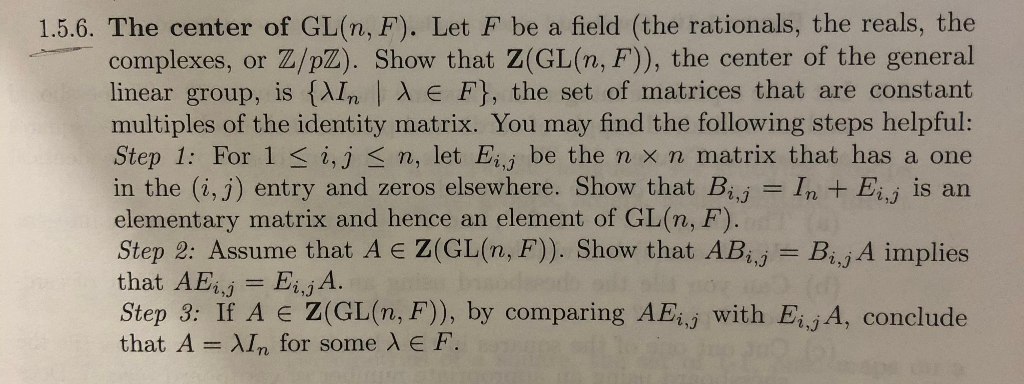The center of GL(n, F). Let F be a field (the rationals, the reals, the complexes, or Z/pZ). Show that Z(GL(n, F)), the center of the general linear group, is {AIn XE F}, the set of matrices that are constant multiples of the identity matrix. You may find the following steps helpful: Step 1: For 1s i, j < n, let E be then x n matrix that has a one in the (i, j) entry and zeros elsewhere. Show that B; i elementary matrix and hence an element of GL(n, F). Step 2: Assume that A E Z(GL(n, F)). Show that ABj = BijA implies that AEj = Ei,jA. Step 3: If A E Z(GL(n, F)), by comparing AEij with EijA, conclude that A = AI,n for some X E F. = In + Eij is an %3D
Show that the center of the General Linear Group is { \lambda * I_n | \lambda is in a rational / real / complex / modulo field }, the set of matrices that are constant multiples of the identity matrix.

Given be the general linear group of all invertible matrices whose entries belongs to the field .
Let be the center of group .
Since identity matrix belongs to center of group , therefore is a non empty set.
For , let be a matrix whose entry is and else entries are zero.
Let be identity matrix of order .
Now consider .
Since is an identity matrix, therefore if , then the all diagonal entries of will be one and entry one and elsewhere zero.
If , then entry of is and all other diagonal entries will be one and else where zero. Therefore:
Therefore the matrix is an invertible matrix and hence .
Trending now
This is a popular solution!
Step by step
Solved in 3 steps




